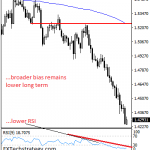Despite a disappointing US CPI report on Friday, which saw core inflation miss once again despite an expected spike due to the “hurricane effect”, moments ago China reported that in September, its CPI printed at 1.6% Y/Y, in line with expectations, and down from, 1.8% in August largely due to high year-over-year base effects, but it was PPI to come in smoking hot, jumping from 6.3% last month to 6.9% Y/Y, slamming expectations of a 6.4% print and just shy of the highest forecast, driven by the recent surge in commodity costs and strong PMI surveys.

While there has been no reaction in the Yuan, either on shore or off, the stronger than expected PPI has pushed China’s 10Y yield to the highest in 30 months, or since April of 2015.

Adding fuel to the flame was PBOC head Zhou Xiaochuan who said earlier that China’s GDP would pick up from the 6.9%figure recorded in the first six months of the year “thanks to a boost from household spending”, according to a synopsis of his comments at the G30 International Banking Seminar posted to the People’s Bank of China website on Monday.” The reason why his comments have impacted the long-end is that the reported, and completely fabricated number, is higher than the previous consensus forecast of a goal-seeked Q3 Chinese GDP of 6.8%.
And while spiking Chinese yields wouldn’t be concerned if China was indeed deleveraging as the Communist Party and the PBOC claim it is doing, the reality is, of course, that China continues to add more and more debt as the latest weekend credit numbers out of the PBOC revealed. As Bloomberg reported earlier, China’s broadest credit aggregated, Total Social Financing, jumped to 1.82 trillion yuan, or over a quarter trillion dollars in September ($276BN to be precise), vs a Wall Street estimate of 1.57 trillion yuan and 1.48 trillion yuan the prior month. New yuan loans also beat expectations, at 1.27 trillion yuan, versus a projected 1.2 trillion yuan, while for the first time in months, the broader M2 money supply did not hit fresh record lows, and instead beat expectations, rising to 9.2% from an all-time low of 8.9%.


















Leave A Comment